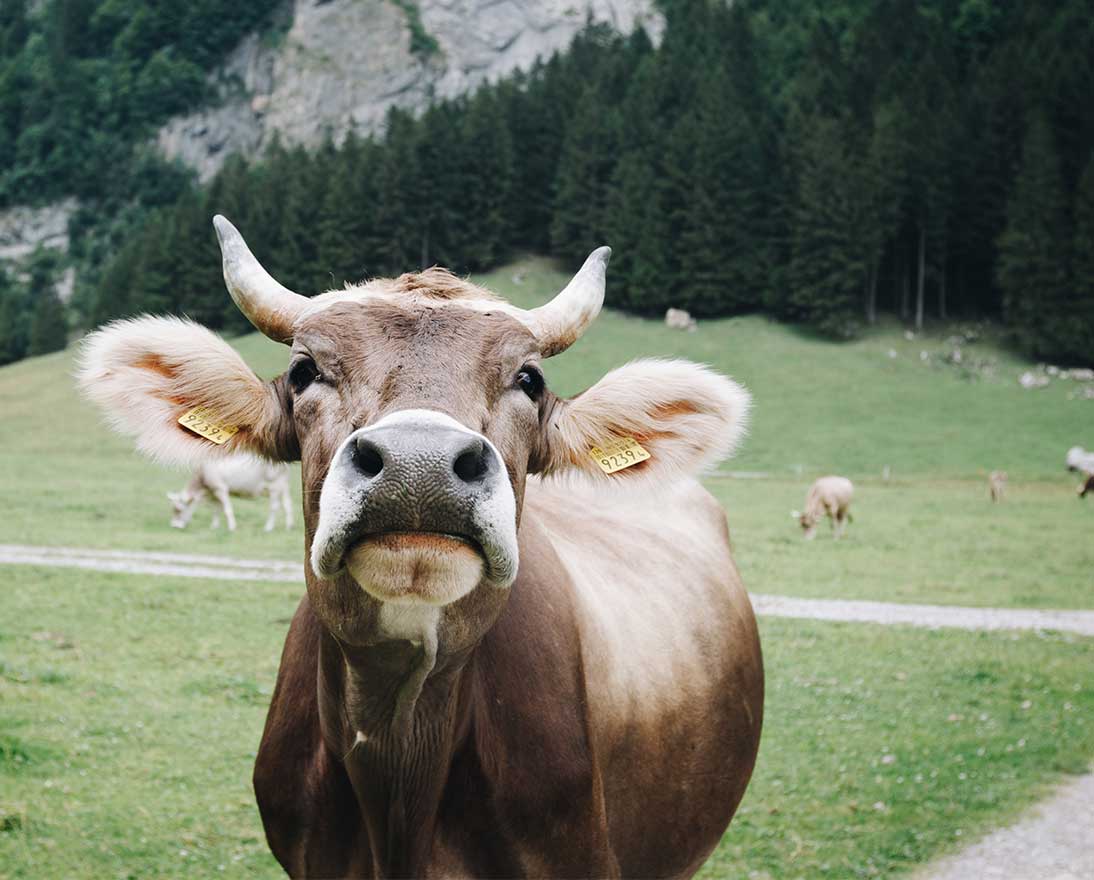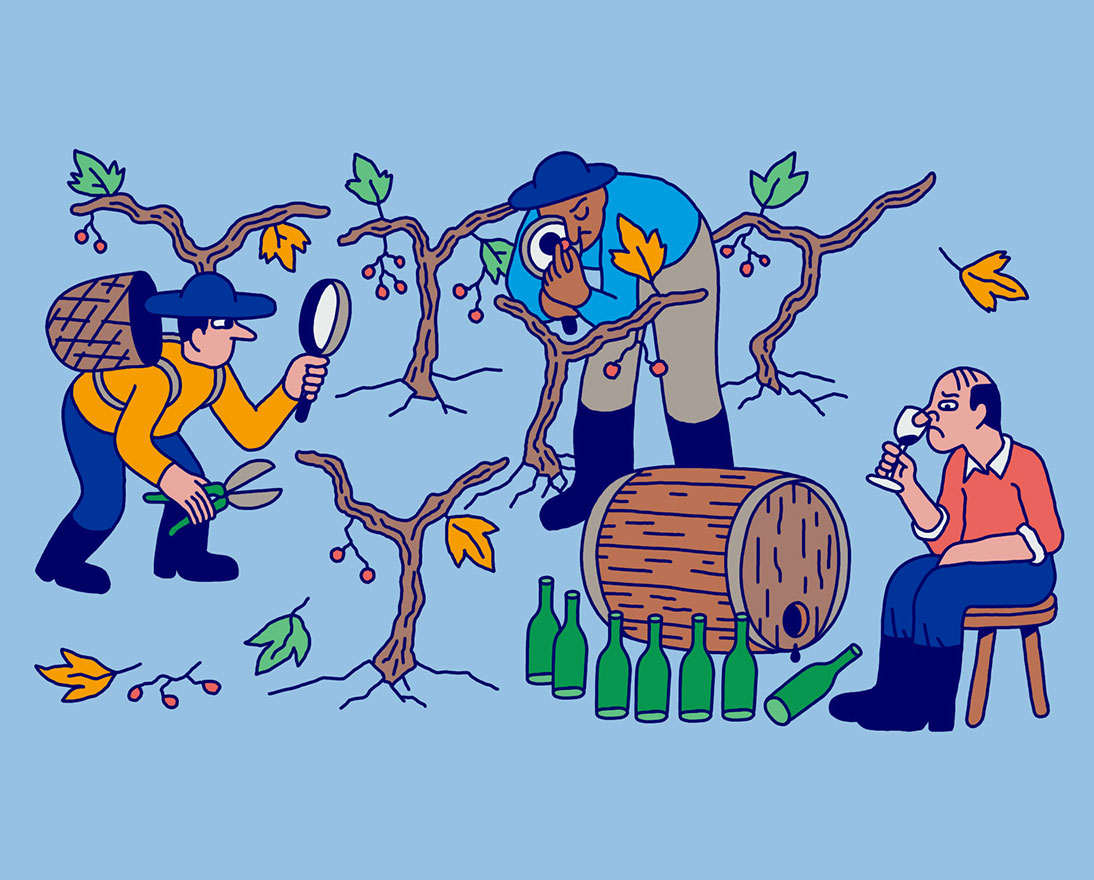How is climate change affecting wine?
Climate changeArticleFebruary 7, 2023
Wine grapes are highly sensitive to changes in climate. So how will the future of wine be impacted by global warming?
Climate is both friend and foe to the winemaking industry. The geology, landscape, soil and, most importantly, the temperature determine what grape varieties can be grown as well as shaping the quality and yield of the harvest. When the climatic conditions are good, then you can expect a great vintage.
But hail, strong winds, heavy rain in the flowering season or frost in spring can destroy a vineyard – like the devastating frost of April 2017 that wiped out 40 percent of Bordeaux’s 2017 harvest. Wine producers have contended with these threats for centuries and have developed innovative risk management strategies. Now, they are contending with a new risk: global warming.
Climate change poses a significant threat to the wine industry. It could increase the frequency of severe weather, while fewer winter frosts may encourage the spread of pests. But a rise in temperature is also likely to lead to a major shift across the whole industry.
How will global warming impact wine styles?
Wine grapes are susceptible to changes in temperature. They grow in narrow geographical and climatic ranges where temperatures during the growing season average 12-22°C (54-72°F). It means global warming could impact the yield and quality of established wine varieties that were selected to best suit the local climate at the time of planting.
“We know that ripening characteristics or profiles have changed. We’ve been accumulating more sugar and producing slightly higher alcohol wines and therefore wine styles have changed,” says Gregory Jones, professor and research climatologist in environmental studies at Linfield University, Oregon, in his TED Talk, ‘Climate, Grapes and Wine’.
“If we look at conservative estimates of warming in the future, Burgundy will likely end up on the warm upper end for pinot noir and chardonnay. It doesn’t remove the region from its ability to produce those wines, but it does change the wine style overall that they can produce,” adds Jones.
Cool vs. hot climate wines
Cool climate wine varieties, like pinot gris and chardonnay, are typically more subtle with crisp acidity, a lighter body and bright fruit flavors. Those from hot climates, like cabernet sauvignon and zinfandel, are bigger, bolder wines with higher alcohol, soft acidity, a fuller body and more dark or lush fruit flavors.
Wine from the same grape variety can have significant differences in style. Gregory Jones says pinot noir can be grown across a 2°C (4°F) climate niche. But pinot noir grapes grown in the cooler zones produce lighter, elegant wines while the warmer zones produce more full-bodied, fruit-driven wines.
Global warming is already extending the boundaries of viable grape growing. England, Belgium, the Netherlands and even Sweden have entered the modern fine wine scene.
Some wine producers have already relocated to cooler climes. In Australia, for instance, the southern island state of Tasmania is rising in popularity as its lower temperatures are suitable for chardonnay and pinot noir. Winemaker Brown Brothers was one of the first movers in 2010 when it purchased three vineyards in Tasmania due to concerns over global warming’s impact on vineyards on the Australian mainland.
Winemakers could also decide to introduce heat tolerant grape varieties from regions such as southern Italy, Sicily and Greece. Alternatively, they can just accept their wine will have a different flavor profile.
How is climate change affecting California’s wine industry?
In the U.S., rising temperatures are currently having a positive impact on the wine industry in California, says Steve Borba, Western States District Claims Manager at Zurich’s crop insurance company RCIS, which insures about 8 percent of California’s 635,000 acres (256,975 hectares) of wine grape vineyards, including 65 distinct wineries and hundreds of individual growers.
“In California, we’re in a climate sweet spot where the weather is perfect for growing grapes. There’s a glut of grapes and growers are planting in areas that wouldn’t have been considered 30 years ago,” Borba explains.
Not only is a warmer climate improving grape yields, it is also reducing risks to the crop. “When I started 38 years ago, freeze at bloom and rain during harvest, which can rot grapes, were the biggest risks. But you don’t see that anymore.”
However, the extra sunshine comes with a downside: no rain. “The reduction in irrigation water is now the number one threat to the Californian wine industry. Wine producers can manage the other risks, but without water you have nothing.”
Higher temperatures are reducing the mountain snowpacks in Sierra Nevada, which act as a natural reservoir. They store about one third of California’s water supply, which melts during the summer and replenishes reservoirs and underground aquifers used for irrigation water.
In 2022, California entered the spring on April 1 with snowpack at just 38 percent of the long-term average. A study from researchers at Columbia University says an ever-lengthening sequence of dry years starting from 2000 across California and the Western U.S. is turning into one of the deepest megadroughts the region has seen in over 1,200 years.
California’s wine industry seems likely to get some respite during 2023. Record rainstorms during the 2022/23 winter wreaked chaos across the state, but they also replenished reservoirs, aquifers and irrigation ponds, and even deposited many feet of snow in the mountains. One winemaker described the rains as a “huge relief,” after three years of drought, another called them “a dream come true.”
How wildfires threaten vineyards
Drought and higher temperatures bring another threat: wildfire. In 2020, California suffered its largest wildfire season in modern history, which affected dozens of Napa Valley’s famed wineries.
“We had wine producers making their first claim in 25 years due to the wildfires. In some cases, the heat from the flames got so hot it literally cooked the vines,” recalls Borba.
The 2019/20 Australian bushfire season was just as devastating. Some vineyards went up in flames, but many more suffered from “smoke taint” where grapes absorb chemicals in the bushfire smoke.
“The profits of one of our winemaker customers were hit when they were forced to repackage their premium wine under a different, cheaper brand as the fruit had been smoke tainted and the wine’s flavor profile adversely impacted,” says Jesse Twartz, Risk Engineer at Zurich Australia, which insures over 80 wineries including many in the world-famous Barossa Valley and McLaren Vale regions.
“There is a growing awareness of the need for bushfire preparedness and resilience. Bushfire attack level ratings, fire water supplies, response plans and construction materials are front of mind for those in high risk areas,” adds Twartz.
Wine’s uncertain future
Climate change will impact the costs of production, revenues and profits of wine producers – who are already, or will be, adjusting their practices and adapting their winemaking business for a warmer world. But whether this adaption is successful, may come down to consumers.
Wine drinkers are creatures of habit. Will they happily quaff wines made from lesser-known grape varieties suitable for hotter climes, such as nero d’avola, vermentino, fiano, vranec and xinomavro?
Can they accept a different flavor profile from their pinot noir grown in Burgundy? Or could they bring themselves to drink a pinot noir from England? You decide.



